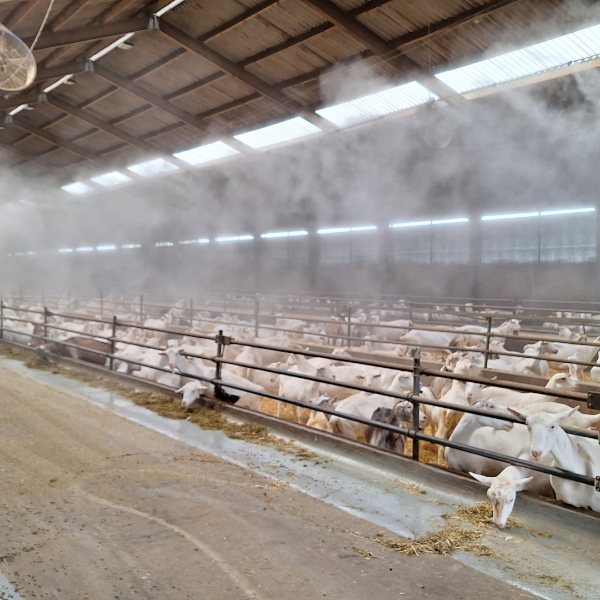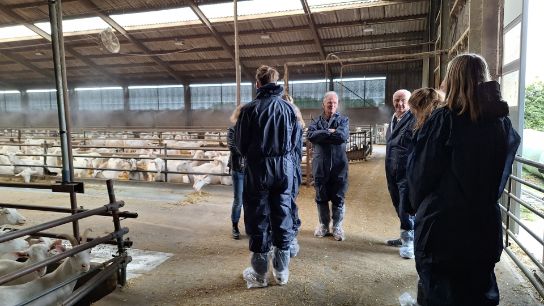‘Meten is weten’ pilot: opportunities for livestock farmers

‘Meten is weten’ pilot: opportunities for livestock farmers
In North Brabant, a pilot led by Witteveen+Bos has been launched to measure livestock barn nitrogen emissions using a uniform approach. 25 livestock farms are participating in the pilot, titled ‘Meten is weten’ (‘to measure is to know’). The pilot involves taking readings of nitrogen, methane and carbon emissions at highly frequent intervals, resulting in reliable, demonstrable emission level measurements. This approach forms the foundation of a new manner of granting permits which provides livestock farmers with opportunities to reduce their emissions.
When applying for or renewing a permit, livestock farmers must be able to demonstrate reductions in nitrogen and greenhouse gas emissions. Applying new, low-nitrogen barn concepts is no longer sufficient proof of this. The solution potentially lies in permit issuance based on target rather than means requirements – in other words, moving from barn concepts to actual emissions reductions.
Uniform measurement approach
The Province of North Brabant wants to use the ‘Meten is weten’ pilot to gain practical experience in the continuous measurement of emissions and insight into the feasibility of issuing permits on the basis of target requirements. The move also provides livestock farmers with the opportunity to adapt their barns and business operations so that nitrogen and greenhouse emissions remain within the set limits. To make this possible, a reliable means of establishing emissions levels based on a uniform approach to measurement is required. Witteveen+Bos is involved in the pilot in various capacities. We are in charge of the project management and, thanks to our accredited odour lab, we can employ our extensive experience in emission measurements, measurement protocols, NEN standards, certification, and ring tests for a variety of clients.
‘Meten is weten’
At the start of the pilot, measuring equipment was installed that, for a whole year, will continuously measure the concentrations of the relevant substances in the barn. Wageningen Livestock Research created a measurement protocol for this purpose. Among other things, it defines what the measurement equipment should consist of – for example, which and how many sensors are needed and where they should be placed. Witteveen+Bos then drew up measurement regulations to ensure the measurements’ quality. The regulations cover aspects such as preparing a measurement plan, installing sensors, selection, calibration, management and maintenance, maintaining production parameters, and reporting.
Opportunities
Using the measurement protocol and measurement regulations, the level of nitrogen, methane and CO2 concentrations in the barns are monitored. Combined with production data such as the number of animals, average weight, and milk urea content, these measurements are then converted into environmental emissions. This is particularly challenging with open barns; in enclosed barns, the influence of air from outside is a less significant factor.
Importantly, this method of measurement gives livestock farmers tools to influence their emissions – for example, by altering feeding routines or spreading nitrogen-absorbing agents throughout the barn. This type of barn management can be included in measurement plans, which is a crucial aspect of target-based permitting: it provides opportunities for livestock farmers to keep nitrogen and greenhouse emissions within the set limits.

Evaluation
We are devoting explicit attention to the various aspects of permitting, supervision and enforcement during the measurement process. Following the summer of 2025, the pilot will be evaluated, with not only the reliability of the measurements being evaluated but also the legal basis for issuing permits. The costs for livestock farms (installation and measurement) will also form part of the evaluation.